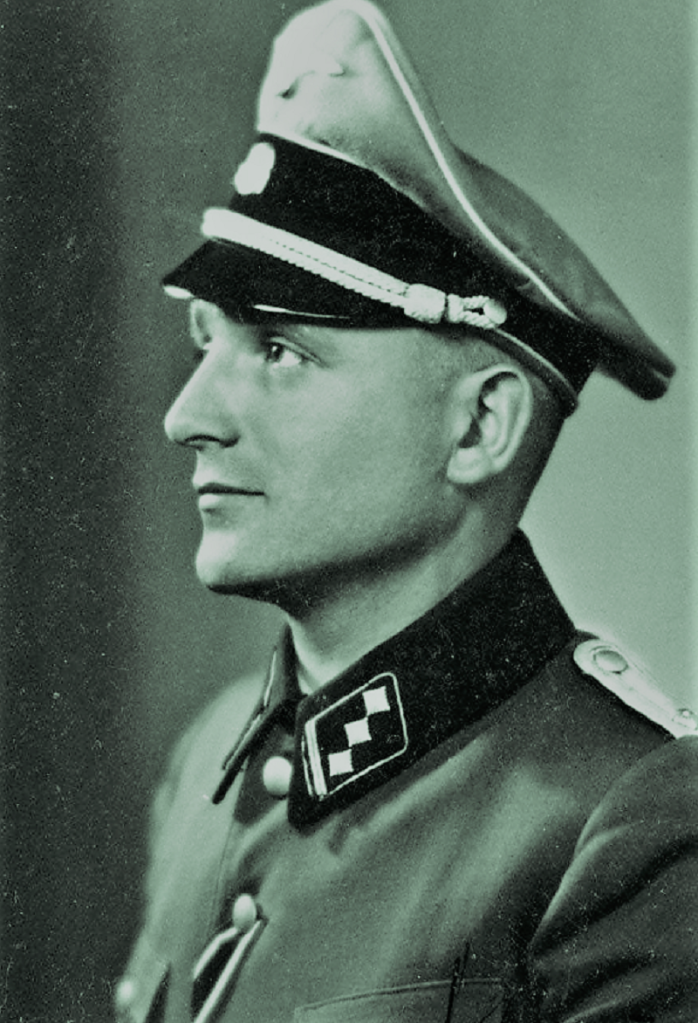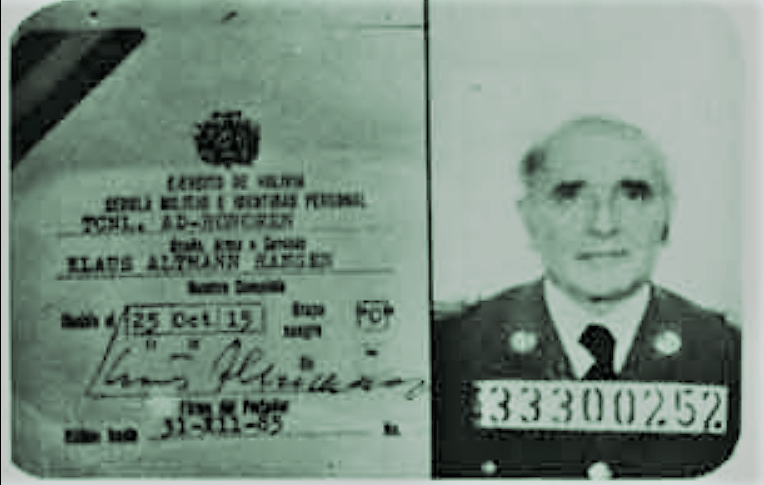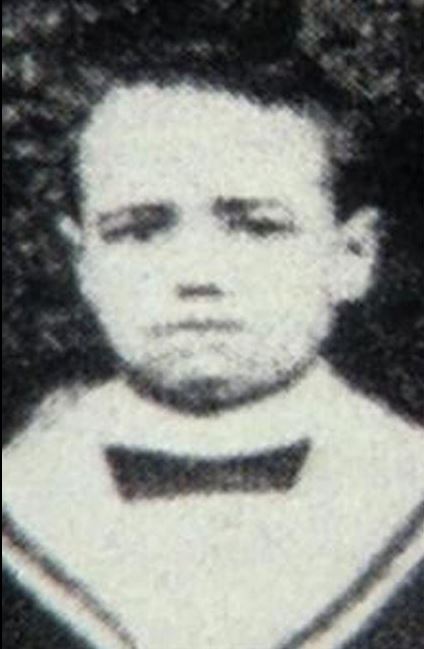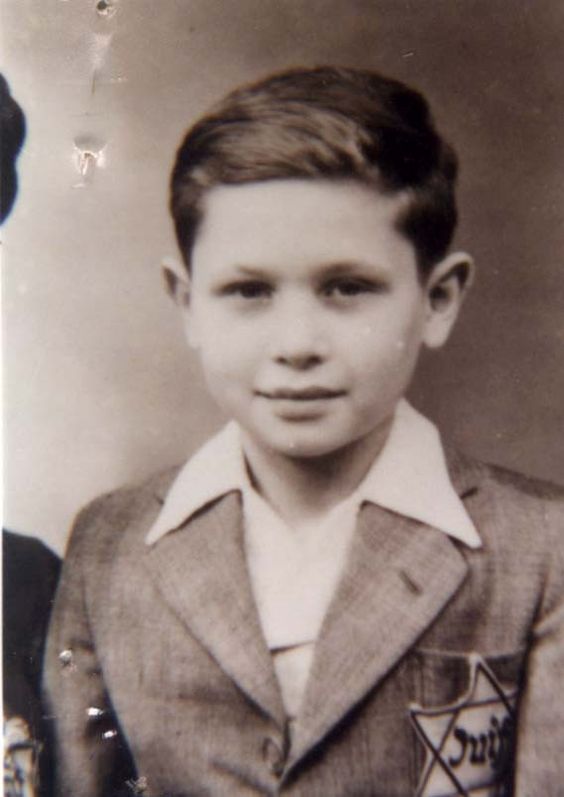
Anyone who has seen Schindler’s List will remember Ralph Fiennes’s portrayal of this man. I say man reluctantly because even though he looked, walked and talked like a man, he was really an animal.
Amon Leopold Göth was born on 11 December 1908 in Vienna. He was married twice, divorced in 1934 and again in 1944. He had two children.He studied agriculture in Vienna until 1928, then from 1928 until 1939 he was employed by the company of ‘Verlag fur Militar und Fachliteratur’ in Vienna.
In 1932 Göth joined the NSDAP, his party membership number 510764 and he joined the SS in 1940, his SS number was 43673.On 5 March 1940 he was drafted into the Wehrmacht, with the rank of Unterfeldwebel.
He was promoted in succession to SS-Obersturmfuhrer in 1940 and Untersturmfuhrer with the letter F denoting professional officer in war time, in 1941.
He was transferred to Lublin in the summer of 1942, where he joined the staff of SS-Brigadeführer Odilo Globočnik, the SS and Police Leader of the Kraków area, as part of Operation Reinhard, the code name given to the establishment of the three extermination camps at Bełżec, Sobibór, and Treblinka.

Zentralbild 9.5.1964 Zur Einweihung der Gedenkstätte auf dem ehemaligen Vernichtungslager Treblinka am 10. Mai. Nicht allzuweit von Warschau entfernt, aber in einer fast menschenleeren Gegend mitten in Wäldern gelegen wurde Mitte 1942 mit dem Bau von Treblinka II begonnen. Treblinka I, etwa 3 km davon entfernt, war von der SS schon im November 1941 als Arbeitsstraflager für “renitente Polen” errichtet worden. Das Vernichtungslager umfaßte ein Gebiet von 13,5 ha. Es war mit einem elektrisch geladenen Stacheldrahtzaun umgeben. In Treblinka wurden die Opfer mit Verbrennungsgasen getötet, die von Motoren aus einem Nebenraum in die Gaskammern geleitet wurden. Die nazistischen Mörder taten alles, um den zur Vernichtung bestimmten Menschen ihre verbrecherischen Absichten zu verheimlichen. Die in westeuropäischen Ländern “zur Umsiedlung nach dem Osten” bestimmten Juden wurden in Personenzügen nach Treblinka befördert. UBz: Faksimile einer erhalten gebliebenen Fahrplananordnung vom 25.8.1942.
Nothing is known of his activities in the six months he served with Operation Reinhard; participants were sworn to secrecy. But according to the transcripts of his later trial, Göth was responsible for rounding up and transporting victims to these camps to be murdered.
Göth was assigned to the SS-Totenkopfverbände (“Deaths-head” unit; concentration camp service).

His first assignment, starting on 11 February 1943, was to oversee the construction of the Kraków-Płaszów concentration camp, which he was to command.The camp took one month to construct using forced labour.

On 13 March 1943, the Jewish ghetto of Kraków was liquidated and those still fit for work were sent to the new camp at Płaszów.Several thousand not deemed fit for work were sent to extermination camps and murdered. Hundreds more were murdered on the streets by the Nazis as they cleared out the ghetto.
On September 3, 1943, Goeth supervised the liquidation of the Tarnow ghetto. During the liquidation of these ghettos, Goeth took advantage of the situation by stealing some of the property that was confiscated from the Jews, including furs and furniture. He stored some of this property in an apartment in Vienna, where his wife lived with his two children.

Göth was also the officer in charge of the liquidation of Szebnie concentration camp, which interned 4,000 Jewish and 1,500 Polish slave labourers. Evidence presented at Göth’s trial indicates he delegated this task to a subordinate, SS-Hauptscharführer Josef Grzimek, who was sent to assist camp commandant SS-Hauptsturmführer Hans Kellermann with mass killings. Between 21 September 1943 and 3 February 1944 the camp was gradually liquidated. Around a thousand of the victims were taken to the nearby forest and shot, and the remainder were sent to Auschwitz, where most were gassed immediately on arrival
Prisoner Joseph Bau (Prisoner Number 69084) described Göth the commandant of Plaszow:
“A hideous and terrible monster who reached the height of more than two meters. He set the fear of death in people, terrified masses and accounted for much chattering of teeth. He ran the camp through extremes of cruelty that are beyond the comprehension of a compassionate mind – employing tortures which dispatched his victims to hell”
For even the slightest infraction of the rules he would rain blow after blow upon the face of the helpless offender, and would observe with satisfaction born of sadism, how the cheek of his victim would swell and turn blue, how the teeth would fall out and the eyes would fill with tears.Anyone who was being whipped by him was forced to count in a loud voice, each stroke of the whip and if he made a mistake was forced to start counting over again. During interrogations, which were conducted in his office, he would set his dog on the accused, who was strung by his legs from a specially placed hook in the ceiling.

In the event of an escape from the camp, he would order the entire group from which the escapee had come, to form a row, would give the order to count ten and would, personally kill every tenth person.At one morning parade, in the presence of all the prisoners he shot a Jew, because, as he complained, the man was too tall. Then as the man lay dying he urinated on him.
Once he caught a boy who was sick with diarrhoea and was unable to restrain himself. Göth forced him to eat all the excrement and then shot him.
By April 1944, Göth had been promoted to the rank of SS-Hauptsturmführer (captain), having received a double promotion, skipping the rank of SS-Obersturmführer (first lieutenant). He was also appointed a reserve officer of the Waffen-SS.In early 1944 the status of the Kraków-Płaszów Labour Camp changed to a permanent concentration camp under the direct authority of the SS-Wirtschafts-Verwaltungshauptamt (WVHA; SS Economics and Administration Office).Mietek Pemper testified at the trial that it was during the earlier period that Göth committed most of the random and brutal killings for which he became notorious.Concentration camps were more closely monitored by the SS than labour camps, so conditions improved slightly when the designation was changed.
The camp housed about 2,000 inmates when it opened. At its peak of operations in 1944, a staff of 636 guards oversaw 25,000 permanent inmates, and an additional 150,000 people passed through the camp in its role as a transit camp.Göth personally murdered prisoners on a daily basis.

His two dogs, Rolf and Ralf, were trained to tear inmates to death.He shot people from the window of his office if they appeared to be moving too slowly or resting in the yard.He shot a Jewish cook because the soup was too hot. He brutally mistreated his two maids,Helen Jonas-Rosenzweig and Helen Hirsch, who were in constant fear for their lives, as were all the inmates.
Although he was married he had a mistress in his villa, Ruth-Irene Kalder, who loved him despite all his murderous activities.

On 13 September 1944 Göth was relieved of his position and charged by the SS with theft of Jewish property (which belonged to the state, according to Nazi legislation), failure to provide adequate food to the prisoners under his charge, violation of concentration camp regulations regarding the treatment and punishment of prisoners, and allowing unauthorised access to camp personnel records by prisoners and non-commissioned officers.Administration of the camp at Płaszów was turned over to SS-Obersturmführer Arnold Büscher. Göth was scheduled for an appearance before SS judge Georg Konrad Morgen.

When Goeth realized that he was being investigated by Dr. Morgen, he sought permission from Wilhelm Koppe in the central office in Oranienburg to execute Wilek Chilowicz, who could have testified against him.but due to the progress of World War II and Germany’s looming defeat, the charges against him were dropped in early 1945.SS doctors diagnosed Göth as suffering from mental illness and he was committed to a mental institution in Bad Tölz, where he was arrested by the United States military in May 1945.
After the war, Göth was extradited to Poland, where he was tried by the Supreme National Tribunal of Poland in Kraków between 27 August and 5 September 1946. Göth was found guilty of membership in the Nazi Party (which had been declared a criminal organisation) and personally ordering the imprisonment, torture, and extermination of individuals and groups of people He was also convicted of homicide, the first such conviction at a war crimes trial, for “personally killing, maiming and torturing a substantial, albeit unidentified number of people”.He was sentenced to death and was hanged on 13 September 1946 at theMontelupich Prison in Kraków, not far from the site of the Płaszów camp.
At his execution, Göth’s hands were tied behind his back. The executioner two times miscalculated the length of rope necessary to hang Göth, and it was only on the third attempt that the execution was successful.
Göth’s last words were “Heil Hitler”.His remains were cremated and the ashes scattered in the Vistula River
In addition to his two marriages, Göth had a two-year relationship with Ruth Irene Kalder, a beautician and aspiring actress.Kalder first met Göth in 1942 or early 1943, when she worked as a secretary at Oskar Schindler’s enamelware factory in Kraków. She soon moved in with Göth and the two had an affair. She took Göth’s name shortly after his death. Göth’s last child was a daughter, Monika Hertwig, whom he had by Kalder. Monika was born in November 1945 in Bad Tölz.

In 2002, Hertwig published her memoirs under the title Ich muß doch meinen Vater lieben, oder? (“I do have to love my father, don’t I?”). Hertwig described the subsequent life of her mother, who unconditionally glorified her fiancé until confronted with his role in the Holocaust. Ruth committed suicide in 1983, shortly after giving an interview in Jon Blair’s documentary Schindler. Hertwig’s experiences in dealing with her father’s crimes are detailed in Inheritance, a 2006 documentary directed by James Moll. Appearing in the documentary is Helen Jonas-Rosenzweig, one of Göth’s former housemaids. The documentary details the meeting of the two women at the Płaszów memorial site in Poland.Hertwig had requested the meeting, but Jonas-Rosenzweig was hesitant because her memories of Göth and the concentration camp were so traumatic. She eventually agreed after Hertwig wrote to her, “We have to do it for the murdered people.” Jonas felt touched by this sentiment and agreed to meet her.
In a subsequent interview, Jonas-Rosenzweig recalled:
It’s hard for me to be with her because she reminds me a lot of, you know … she’s tall, she has certain features. And I hated him so. But she is a victim. And I think it’s important because she is willing to tell the story in Germany. She told me people don’t want to know, they want to go on with their lives. And I think it’s very important because there’s a lot of children of perpetrators, and I think she’s a brave person to go on talking about it, because it’s difficult. And I feel for Monika. I am a mother, I have children. And she is affected by the fact that her father was a perpetrator. But my children are also affected by it. And that’s why we both came here. The world has to know, to prevent something like this from happening again.
Hertwig also appeared in a documentary called Hitler’s Children (2011), directed and produced by Chanoch Zeevi, an Israeli documentary filmmaker. In the documentary, Hertwig and other close relatives of infamous Nazi leaders describe their feelings, relationships, and memories of their relatives.
Jennifer Teege, the daughter of Monika Hertwig and a Nigerian man, discovered that Göth was her grandfather through Hertwig’s 2002 memoirs.

She addressed her coming to terms with her origins in the book, My Grandfather Would Have Shot Me (originally published as Amon. Mein Großvater hätte mich erschossen in 2013.

I have seen the interviews with both Göth’s daughtet Monika and Grand daughter Jennifer and they are brave women and indeed victims of the (Grand)Father’s sins.
But I don’t think that Jennifer Teege’s Grandfather would have killed her, The fact is she would not have been boren because he would have never allowed the relationship between her mother and father. He more then likely would have killed her father.
I am passionate about my site and I know a you all like reading my blogs. I have been doing this at no cost and will continue to do so. All I ask is for a voluntary donation of $2 ,however if you are not in a position to do so I can fully understand, maybe next time then. Thanks To donate click on the credit/debit card icon of the card you will use. If you want to donate more then $2 just add a higher number in the box left from the paypal link. Many thanks




























































You must be logged in to post a comment.